-
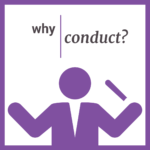
Why Conducting is Key!
Although the act of conducting typically applies to a person who directs a group of other musicians in a unified and expressively-intentional way, the patterns and movement can also be used to strengthen our own individual musical comprehension. This is because conducting is functional beat! That means you’re consciously aware of what rhythms you’re reading […]
-
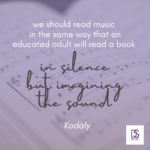
Top Tips for Linking Music Literacy with Music Learning in the Instrumental Lesson
My goal as a music teacher is to help students become musically literate in the same way as a language teacher helps their students become literate in the language they are being taught. But what does this mean? The Australian Curriculum document states that “Literacy” (referring to the English language) is the ability “to interpret […]
-

Teaching Music: Tips, Tools & Why We Do It
Check out some resources and content you might have missed around the DSMusic space recently. Resource Round-Up The Importance of Music Education Although all things music literacy and language of music are key here at DSMusic, we’re also big fans of terrific advocacy material. While we as music teachers and students understand the importance of […]
-
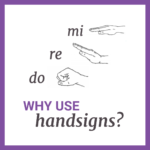
The what, how and why of handsigns
Why use handsigns? Each Solfa note (do, re, mi etc.) has a certain shape you make with your hand whenever you sing it – a handsign. As you sing the notes, you also move your hand up and down in a way that matches how the pitches are moving. It’s this approach that means you […]
-

How Eilish & Holst can help you Decode Sound!
Check out some resources and content you might have missed around the DSMusic space recently. Resource Round-Up Build Better Performers! DSMusic has everything you need to digitally decode character, comparison, tempo, articulation, tone colour and more! Decoding Sound: Analysis for the Secondary School is a fully interactive way for students to build word lists and […]
-
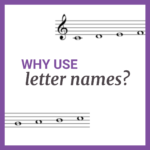
Let’s learn about letter names!
Music language is the method of human communication, either sung, played or written, consisting of the use of notes, in a structured and conventional way. If we’re thinking in terms of language, In music, letter notation can be a system used to represent pitches. In conventional Western note-naming, these are the letters A-G. These letter […]
-
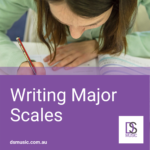
Intervals, Analysis and Access — Music Is Transformative
Check out some resources and content you might have missed around the DSMusic space recently. Resource Round-Up Seeking some Analysis Aid? Get yourself a step-by-step look at expressive outcome (feeling, character or mood), the elements of music (including the expressive ones!) and how all of this contributes to interpretation in performance. Plus, build your analysis […]
-

Why music literacy is as easy as do – re – mi!
What is Tonic Solfa? Tonic Solfa or Moveable do Solfa is a system of note naming in which every note within a scale is given a name based on its relationship to the other notes within that key. This is called tonic, functional or moveable do solfa as each name represents the function of that particular note (for example the […]
-

Sounding out rhythms = naming & knowing
Here at DSMusic, we’re big on the idea of really knowing concepts – understanding the what and why so you’re able to apply it to your music contexts in a practical way. Part of our approach to fostering musicianship skills – being musically literate, that is – involves rhythm names (you know, all that ta […]
-
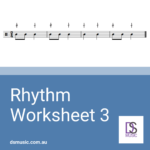
Canons, Creativity & Communities
Check out a few DSMusic free resources and a discover a round-up of our favourite finds this month.
-
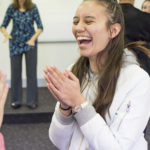
Memorisation & Music Learning
An important aspect of any musicianship, music literacy or music aural and music theory work we do is memorisation. This is where you memorise a specific concept or element (e.g. scales or chords etc.) or activity (e.g. a melody or rhythm etc). The obvious reason for doing this is so that the information is there, in your […]
-
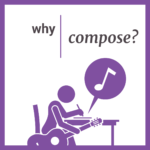
Why you should compose when practicing music literacy skills
Composition, just like performance, is a beneficial way to apply your music aural and music theory skills – what we call musicianship or music literacy – and to foster creativity. In the same way playing an instrument or singing gives you a chance to combine your practical technique, sound production and interpretation, composition is informed […]
-

Beethoven & Bingo
Check out a few DSMusic free resources and a discover a round-up of our favourite finds this month.
-
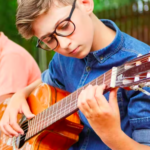
Practice, Performance Anxiety & Lifting Literacy
Plus dynamics, quaver rests, quotes and more – check out a few DSMusic free resources and a discover a round-up of our favourite finds this month.
-

Melody, Models & a bit of Bill Bailey
Tackle tonality with Bill Bailey, check out a few DSMusic free resources and a discover a round-up of our favourite finds this month.
-

Major Scales, NAPLAN & Elgar
Check out some Level 1 Major Scale writing content, a few DSMusic videos and a round-up of our favourite finds this month.
-

Never miss out on DSMusic Updates!
News Feed Preferences on Facebook How to make sure you never miss out on any DS Music updates! I love what I do! Creating resources and content built upon sequential and rigorous music literacy and then, getting to share it with all of you. Sometimes I will churn out a bunch of exciting worksheets, videos […]
-
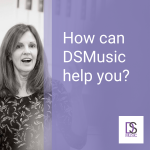
DSMusic – Remote Learning for All!
Are you looking for material that is ready-made for remote-learning? Do you need some stuff to stash away to leave as extras or send off to students who are home sick from school? Perhaps what you’re after is some go-to revision, extension or support material for students across their learning pathway? For all of you […]
-

Universal Music Education
Universal Music Education Welcome to 2020 and our first post for the year. This article has been kindly shared by Walter Bitner: a multi-instrumentalist, singer, conductor, and teacher, and serves as Director of Education & Community Engagement for the Richmond Symphony in Richmond, Virginia, USA. He writes about music and education on his website Off The Podium at walterbitner.com, and his […]
-
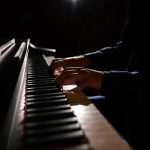
An Informed Performance
An Informed Performance Lies in the Historical Context of a Musical Composition Welcome to our third guest post, kindly written and shared by Drew Schweppe. Drew (IES Abroad Vienna, Fall 2010 | Ithaca College), is the Founder and Managing Director of Informusic, the first all-in-one music history resource for smart phones and tablets. Thanks so much Drew! A […]
-

Clever Echo???
Clever Echo in the Secondary School Music Classroom The Oxford English dictionary gives the definition of the word echo as “a sound or sounds caused by the reflection of sound waves from a surface back to the listener”. [1] In the classroom, echoing is an activity in which something is performed firstly by the teacher […]
-
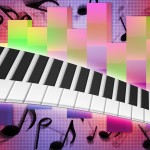
Lean Forward!
Just a quick post from me today (am in the middle of writing the 2nd Edition of the Level 3 books, CDs etc ready for 2017!) I came across this action song when my daughter sang it ALL the way home in the car (it’s an hour drive!!!) I can’t find the source of the […]
-

Practicing Transcriptions
It’s not as easy as you think! When we do transcriptions with our students in class that is exactly what we are practicing – the process of TRANSCRIPTION! Yes of course we do have to learn and practice that process but it is learning and practicing the content of the transcriptions that will actually help […]
-
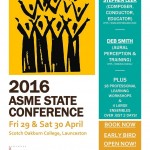
My Tasmanian Adventure
A couple of weeks ago I was one of the key note presenters at the ASME (Tasmanian branch or “TASME” as it’s affectionately known) conference, held at Scotch College Oakburn in Launceston. Having never been a key note speaker before and having never visited Launceston either I was VERY excited (and just a tad nervous). […]
-
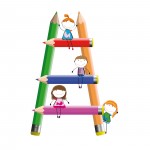
Tone Ladders (What are they & how do I use them?)
What are Tone Ladders? Tone Ladders are a great way ofvisually representing pitch in anintervallically accurate way –that is so long as the intervalsbetween the notes are representedaccurately on the tone ladder. For example, if a tone ladder looks like this: or this: it is NOT representative of the different intervals between the notes e.g. of […]

